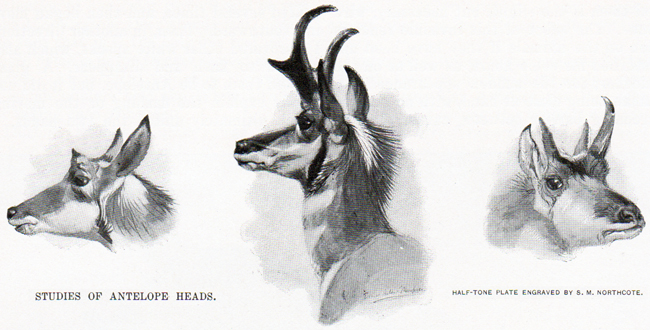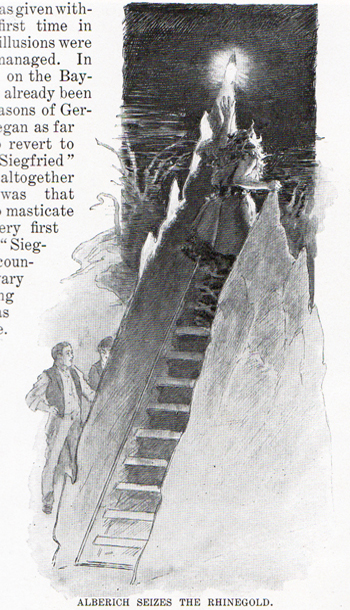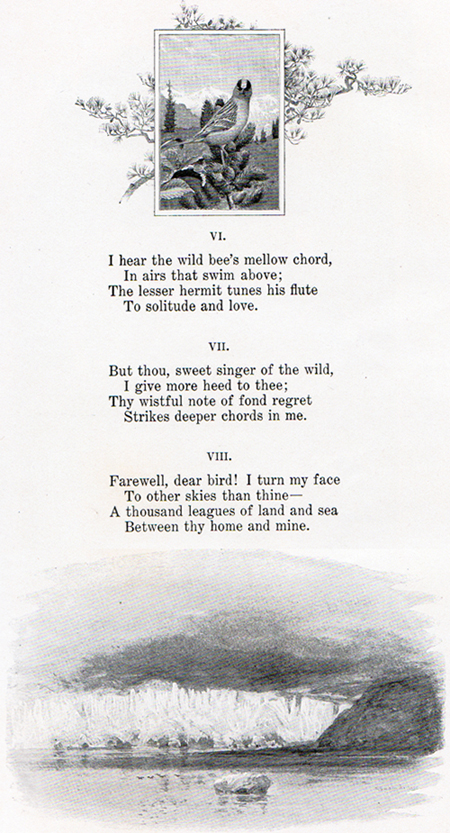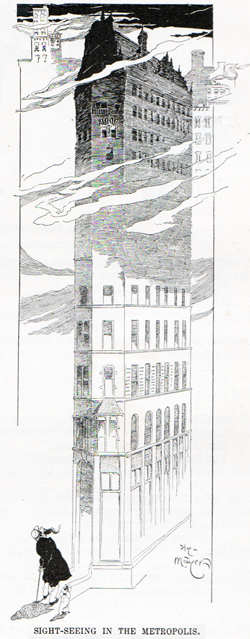America in 1900
Today, America in 1900. The University of Houston's College of Engineering presents this series about the machines that make our civilization run, and the people whose ingenuity created them.
I opened the 1900 volume of Century Magazine expecting to see it brimming with anticipation of the new twentieth century. But I found nothing of the sort. Like the Chicago Columbian Exposition seven years earlier, this too is a pretty smug celebration of America becoming the next among the old European nations.
An article by Teddy Roosevelt claims to be about military preparedness. It's more a raw celebration of the American military. And he not-so-subtly reminds us of his own role in the recent Spanish-American War. That war cost us fewer than five hundred killed in action. We inflicted far greater damage to the Spanish and Cubans. (Never mind that disease had been the real enemy of both sides.) But it left us feeling our oats. Here is a rising sense of national identity.
Even Booker T. Washington's article "Signs of Progress among the Negroes," tries to put a cheery face on a very grim situation. He tells stories of desperately poor Black people wresting education and respectability from the still-harsh, post-slavery world.
The volume is peppered with poetry. We find American names like James Russell Lowell and James Whitcomb Riley that survive today. But we also find Rudyard Kipling whose British sense of empire matched Roosevelt's. Still, the poetry reveals a genuine national temperament. Naturalist John Burroughs goes off to study Alaskan birds. Then writes,
Farewell, dear bird! I turn my face
To other skies than thine-
A thousand leagues of land and sea
Between thy home and mine.
For all his travel he's rooted in the texture of his America.

The stress of a lengthy article about the Washington D.C. Zoo is entirely upon American animals.
 A subtext in most of the articles is that we're now a country of high culture. One piece tells how Wagnerian opera is taking stagecraft to new heights. Never mind that these feats are being done, not at our new Metropolitan Opera, but back in Bayreuth. We're cultured because we care about their mechanical dragons -- about rhinegold that's made to glow by the new miracle of electricity.
A subtext in most of the articles is that we're now a country of high culture. One piece tells how Wagnerian opera is taking stagecraft to new heights. Never mind that these feats are being done, not at our new Metropolitan Opera, but back in Bayreuth. We're cultured because we care about their mechanical dragons -- about rhinegold that's made to glow by the new miracle of electricity.
And, for all its old worldliness, the magazine does finish with electricity. A closing article is about power in industry. It says that America uses the highest paid workers to produce the world's least expensive shoes. The secret is how well we power our factories. Workers in a hat factory once had to run back and forth to an oven that reheated their irons. Now they're equipped with -- drum roll -- electrically-heated irons at each work station.
That sounds pretty minor. But electricity would soon touch all aspects of American life. Our defining cultural agent would be electricity that reached far beyond Wagnerian stagecraft. Another article praises Britain's efficient government-run telegraph. It suggests that we might consider a public option -- a government telegraph competing with private companies. And with that, this world of yesterday suddenly seems much less far away than it first did.
I'm John Lienhard at the University of Houston, where we're interested in the way inventive minds work.
The Century Illustrated Monthly Magazine. Vol LIX (New Series Vol. XXXVII) Nov. 1899 to April, 1900. All engraved illustrations are from this source.
For more on the Tower Building in the first illustration above, see Episode 2289.

The last three stanzas of John Burroughs' poem, The Golden-Crown Sparrow of Alaska(The bird is pictured in the inset at the top of the page. Contemporary photo of the Yellow-Crowned Sparrow, courtesy of Wikipedia Commons, below.)

